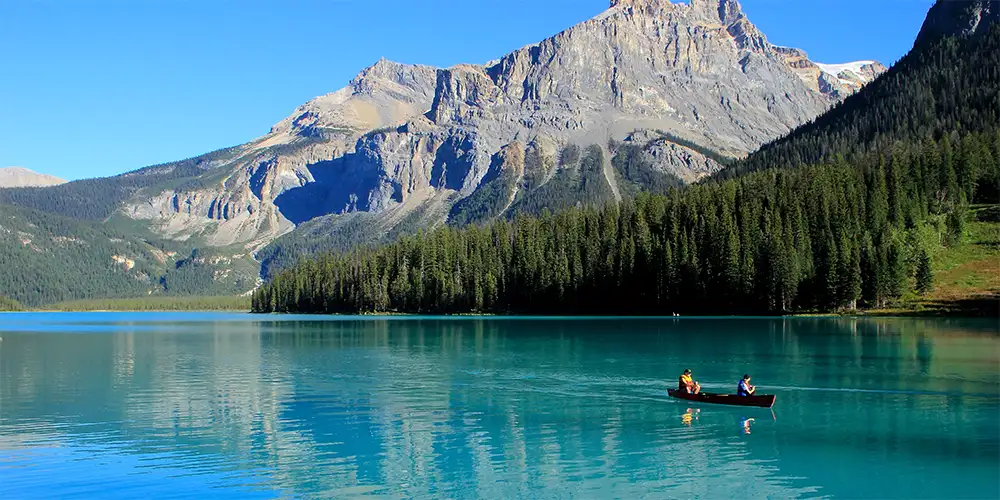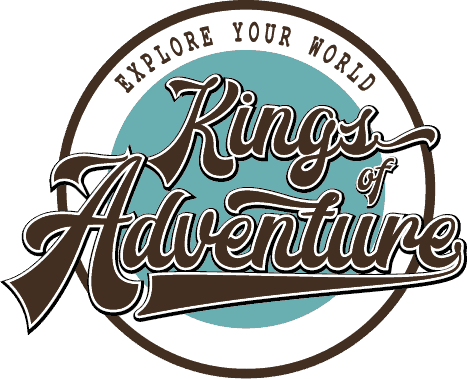If you are new to canoeing, you might feel overwhelmed by the unfamiliar terms and jargon that seasoned paddlers use. Canoeing terminology is not only a way of communicating with other canoeists, but also a way of understanding the equipment, skills, and environment of this wonderful sport. Learning the language and culture of canoeing can help you become a more confident and competent paddler, as well as enrich your appreciation of the history and traditions of canoeing.
In this article, we will provide you with a glossary of canoeing terms, organized into categories for easy reference. We will also explain the meaning and significance of each term, using examples and images when possible. Whether you want to learn the basics or expand your vocabulary, this glossary will be a helpful guide. Not to be confused with kayaks, canoes are a different craft altogether, and some of these terms are not transferrable.

Canoeing Terminology – Equipment
This category covers the terms related to the canoe itself and the accessories that are used for canoeing.
- Aft: Toward the rear or stern of the canoe.
- Amidships: The center or middle of the canoe
- Backrest: A device that supports the back of a paddler, usually attached to the seat. Some canoeists prefer not to use a backrest, as it can limit their mobility and balance.
- Bailer: A scoop or container used to remove water from the canoe. It can be made from an empty plastic bottle, a tin can, or a sponge.
- Beam: The width of the canoe, typically measured at three points: waterline (the widest point where the canoe touches the water), gunwale (the widest point at the top edge of the canoe), and maximum (the widest point of the hull).
- Belly: The bottom of the canoe.
- Bilge: The point of greatest curvature between the bottom and side of the canoe below the waterline.
- Blade: The wide, flat end of the paddle that goes into the water.
- Bow: The front end of the canoe.
- Canoe: A narrow, open boat that is propelled by one or more paddlers using single-bladed paddles. Canoes come in various shapes, sizes, and materials, depending on their intended use and design.
- Deck: Panels attached to the inwales at the bow and stern ends of the canoe. They provide structural support and protection for the hull.
- Depth: The distance from the top of the gunwales to the bottom of the canoe when measured at the beam. Sometimes called center depth, as opposed to the depth at the extreme ends of the canoe.
- Draft: The amount of water a canoe draws or displaces when floating. A shallow draft means less water resistance and easier maneuverability, but also less stability and load capacity. A deep draft means more water resistance and harder maneuverability, but also more stability and load capacity.
- Edging: Putting the canoe on edge or tilt to increase its maneuverability and responsiveness. Edging can help turn the canoe, avoid obstacles, or counteract wind or current effects.
- Entry line: The shape of the bow where it cuts through the water. A sharp entry line means less drag and faster speed, but also less buoyancy and stability. A blunt entry line means more drag and slower speed, but also more buoyancy and stability.
- Flare: Occurs when the sides of the canoe are wider above the waterline, particularly at or near the gunwales. Flare can help deflect water away from the canoe, increase stability, and provide more room for cargo or passengers.
- Flotation: Buoyant material set into the ends or other panels of a canoe to make it float if capsized. Flotation can be in the form of air bags, foam blocks, or sealed compartments.
- Foot-brace: A wood or metal bar against which a paddler braces his or her feet. Foot-braces help secure the paddler in the canoe and add to the efficiency of his or her strokes.
- Freeboard: The distance between the gunwale and waterline at the lowest point. Freeboard indicates how much of the canoe is above the water and how much weight it can carry without sinking too low.
- Fullness: The shape of the canoe is determined by how quickly the hull widens. A full canoe widens sooner and stays wide longer, providing more stability and capacity, but also more drag and less speed. A fine canoe widens later and stays narrow longer, providing less stability and capacity, but also less drag and more speed.
- Gunwale: The top edge of the canoe, both inside and outside. Also spelled gunnel or referred to as rail.
- Hull: The frame or body of the canoe, excluding the gunwales and decks.
- Inwale: The inside top edge of the canoe.
- Keel: An external ridge along the centerline of the canoe. A keel can improve tracking and stability, but also increase drag and reduce maneuverability. Some canoes have no keel or multiple keels.
- Keel line: The centerline of the canoe runs from bow to stern along the belly of the canoe. The keel line determines the shape and performance of the canoe.
- Outwale: The outside top edge of the canoe.
- Painter: A rope attached to the bow or stern of the canoe, used for tying, towing, or lining the canoe. A painter can also be used as a safety line in case of a capsize or a rescue.
- Planking: Lightweight boards nailed to the ribs on wood-canvas canoes. Their main purpose is to support the canvas.
- Ribs: Lateral supports that run at angles to the keel on the inside of a canoe. Ribs provide hull rigidity and structural strength.
- Rocker: The upward curve of the keel line at the bow and stern of the canoe. Rocker affects the turning ability and tracking of the canoe. More rocker means easier turning but harder tracking. Less rocker means harder turning but easier tracking.
- Seat: A platform on which a paddler sits in a canoe. Seats can be fixed or adjustable, and made from various materials, such as wood, cane, webbing, or plastic.
- Shaft: The long, narrow part of the paddle that connects the blade to the grip.
- Sheer: The height of the gunwale above the waterline along the length of the canoe. Sheer affects the seaworthiness and aesthetics of the canoe. More sheer means more protection from waves and spray, but also more wind resistance. Less sheer means less protection from waves and spray, but also less wind resistance.
- Sponson: A flotation device attached to the side of a canoe to increase its stability and buoyancy. Sponsons can be inflatable or rigid and are usually used for whitewater or sailing canoes.
- Stem: The point at which the sides of a canoe meet at the bow or stern. The stem can be pointed, rounded, or squared, depending on the design and purpose of the canoe.
- Stern: The rear end of the canoe. (some canoes are designed to have outboard motors fitted, these canoes have square sterns).
- Stem band: A metal strip that covers and protects the stem of a wood-canvas canoe. Also called bang plate or stem iron.
- Thwart: A crossbar that connects the gunwales and provides structural support for the canoe. Thwarts can also serve as handles for carrying or portaging the canoe.
- Tumblehome: Occurs when the sides of the canoe are narrower at the gunwales than at the waterline, particularly at the center of the canoe. Tumblehome can help reduce wind resistance and make paddling easier by bringing the gunwales closer to the paddler’s body.

Canoeing Terminology – Skills
This category covers the terms related to the techniques, strategies, and maneuvers that are used for paddling, steering, and controlling the canoe.
- Back ferry: Paddling the canoe backward at an angle to the current when crossing a stream laterally. This technique can help slow down the canoe and avoid obstacles downstream.
- Backpaddle: Paddling backward to slow down or reverse the forward motion of the canoe.
- Brace stroke: A stroke that uses the paddle as a support to prevent the canoe from capsizing. There are two types of brace strokes: high brace and low brace, depending on whether the paddle is held above or below the water level.
- Draw stroke: A stroke that pulls the canoe sideways toward the paddle. It is used for moving closer to an object or correcting the canoe’s course.
- Forward stroke: The most basic and common stroke that propels the canoe forward by pushing water backward with the paddle blade. It is also called a power stroke or cruising stroke.
- J-stroke: A stroke that combines a forward stroke with a slight pry at the end, forming a J-shaped path with the paddle. It is used for steering and keeping the canoe on a straight course without switching sides.
- Lining: The act of guiding the canoe downstream around obstacles with the aid of ropes (lines) attached to the bow and stern. Lining can be done from the shore or from inside the canoe, depending on the situation and preference.
- Pitch stroke: A stroke that pushes the canoe sideways away from the paddle. It is used for moving away from an object or correcting the course of the canoe.
- Portage: The act of carrying the canoe over land between two bodies of water or around an obstacle. Portaging can be done by one or more people, depending on the weight and size of the canoe and the distance and difficulty of the terrain.
- Pry stroke: A stroke that pushes water outward with the paddle blade, levering against the gunwale. It is used for turning or moving the canoe away from an object.
- Sculling: A technique that involves moving the paddle blade back and forth in a figure-eight pattern in the water. It is used for maintaining balance, steering, or moving sideways.
- Sweep stroke: A stroke that moves the paddle in a wide arc from bow to stern or from stern to bow. It is used for turning or changing the direction of the canoe.
- Switch: The act of changing paddling sides in a canoe. Switching can help balance the effort and avoid fatigue, as well as adjust to wind or current conditions.

Canoeing Terminology – Environment
This category covers the terms related to the natural features, conditions, and hazards that are encountered in the waterways where canoeing takes place.
- Backwater: A section of water that is isolated from the main current or flow, usually by an obstruction or a bend in the river. Backwater can provide a calm and sheltered area for resting or fishing, but also a breeding ground for mosquitoes and other insects.
- Beam wind: A wind that blows across the canoe from side to side, perpendicular to the direction of travel. A beam wind can make paddling difficult and affect the stability of the canoe, especially if it is strong or gusty.
- Braided river: A river that splits into multiple channels separated by islands or sandbars. Braided rivers can offer various routes and challenges for canoeists, but also require careful navigation and scouting to avoid dead ends or obstacles.
- Break-in: A gap or opening in the shoreline vegetation that allows access to the water. Break-ins can be natural or man-made and are often marked by signs or buoys.
- Current: The movement or flow of water in a river, stream, or lake. Current can affect the speed and direction of the canoe, as well as its maneuverability and stability. Current can be influenced by various factors, such as gradient, volume, wind, tide, and obstacles.
- Eddy: A circular movement of water that forms behind an obstruction or at a bend in a river. Eddies can create calm areas where canoeists can rest, scout, or fish, but also turbulent areas where canoeists can lose control or capsize.
- Gradient: The slope or steepness of a river bed. Gradient affects the speed and force of the current, as well as the difficulty and danger of the rapids. Gradient is usually measured in feet per mile or meters per kilometer.
- Headwind: A wind that blows against the direction of travel of the canoe. A headwind can slow down the canoe and make paddling harder and more tiring.
- Lake: A large body of water surrounded by land. Lakes can offer scenic and peaceful canoeing experiences but also pose challenges such as wind, waves, weather, and navigation.
- Leeward: The side sheltered from the wind. Also, the direction toward which the wind is blowing.
- Put-in: The place on the shore of a lake or river where canoeists launch or start their trip. Put-ins can be natural or man-made and are often equipped with facilities such as parking lots, docks, ramps, or signs.
- Rapids: Sections of a river where the water flows fast and turbulent over rocks or other obstacles. Rapids are classified according to their difficulty and danger on a scale from Class I (easy) to Class VI (extreme). Rapids can provide excitement and challenge for canoeists but also require skill and preparation to run safely.
- River: A natural stream of water that flows from a source to a mouth, usually into another body of water. Rivers can vary in size, shape, and character, offering diverse and dynamic canoeing opportunities.
- Shoal: A shallow area in a body of water where the water depth is less than the draft of the canoe. Shoals can be caused by sandbars, rocks, or vegetation, and can be visible or hidden. Shoals can force canoeists to get out and haul or drag their canoes across them, or to avoid them by paddling around them.
- Strainer: An obstruction in a river, such as a fallen tree or a fence, that allows water to pass through but blocks or traps solid objects, such as canoes or paddlers. Strainers are very dangerous and should be avoided at all costs, as they can cause capsizing, entrapment, or drowning.
- Tailwind: A wind that blows in the same direction as the travel of the canoe. A tailwind can speed up the canoe and make paddling more effortless and more enjoyable.
- Take-out: The place on the shore of a lake or river where canoeists end or finish their trip. Take-outs can be natural or man-made and are often equipped with facilities such as parking lots, docks, ramps, or signs.
- Waterline: The line where the water meets the hull of the canoe. The waterline changes depending on the load and trim of the canoe, as well as the water conditions.
- Whitewater: Water that is white or frothy due to turbulence or aeration. Whitewater is usually found in rapids, waterfalls, or waves, and can indicate difficulty and danger for canoeists.
Conclusion
Canoeing terminology is a rich and diverse vocabulary that reflects the history and culture of canoeing. By learning the meanings and significance of these terms, you can enhance your knowledge and appreciation of this sport, as well as communicate more effectively with other canoeists.
Whether you are a beginner or an expert, knowing canoeing terminology can help you enjoy your canoeing adventures more fully and safely. We hope this glossary has been useful and informative for you. If you want to learn more about canoeing topics and opportunities, we invite you to explore our website and blog for more resources and tips. Happy paddling!

Author – Jack
Jack is a Canoe / Kayak Instructor with a BSc [Hons] in Outdoor Education.
